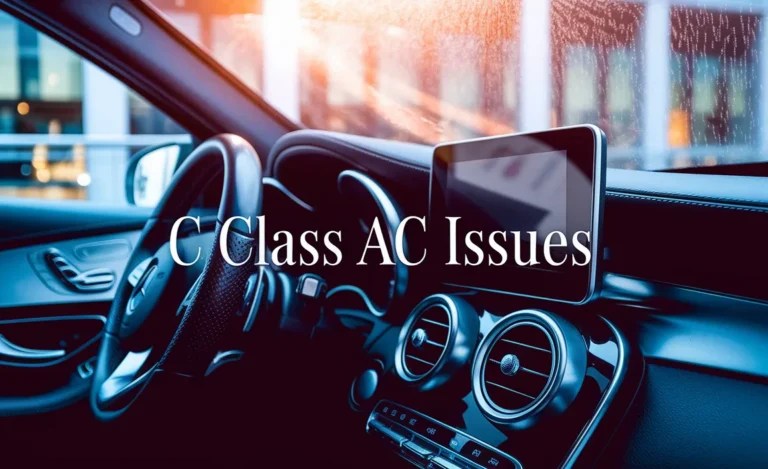Mercedes-Benz C Class Battery Specs: Ultimate Performance
C Class battery specs are crucial for optimal performance, covering capacity, voltage, and type. Understanding these details ensures your Mercedes-Benz C-Class runs efficiently, delivers exhilarating drives, and powers its advanced systems reliably. This guide breaks down everything you need to know about your C-Class battery.
Owning a Mercedes-Benz C-Class is a commitment to luxury, performance, and advanced engineering. Yet, like any sophisticated machine, its heart relies on a powerful and dependable battery. When your C-Class battery isn’t performing at its best, it can lead to a host of frustrating issues, from slow cranking on cold mornings to unexpected electrical glitches.
The good news is that understanding your C-Class battery’s specifications doesn’t have to be complicated. We’re here to demystify these essential details, empowering you to keep your drive smooth and your Mercedes-Benz running like the star it is. Let’s dive into what makes your C-Class battery tick and how to ensure ultimate performance. We’ll cover everything you need to know, from basic specs to maintenance tips.

Understanding C-Class Battery Basics
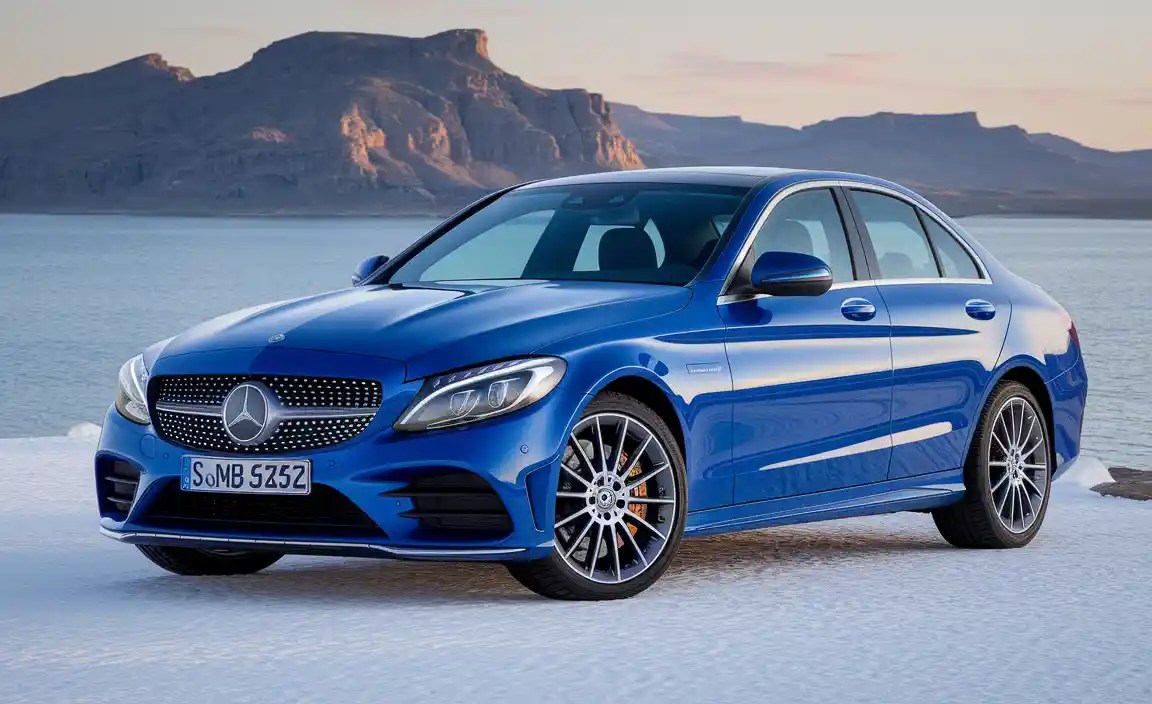
Your Mercedes-Benz C-Class battery is more than just a power source; it’s the foundational component that ignites the engine, supports the complex electronic systems, and ensures every drive is as seamless as you expect from a Mercedes-Benz. Think of it as the central nervous system for all your car’s electrical functions.
What are the Key C Class Battery Specs?
When we talk about battery specifications, we’re referring to the technical details that define its capabilities and suitability for your vehicle. For a C-Class, these are paramount:
- Voltage: This is the electrical potential difference the battery provides. Most modern vehicles, including the Mercedes-Benz C-Class, operate on a 12-volt system. This standard voltage is essential for powering all the car’s electronic components.
- Ampere-Hour (Ah) Rating: This indicates the battery’s capacity – essentially, how much energy it can store and deliver over time. A higher Ah rating means the battery can supply a given current for a longer duration.
- Cold Cranking Amps (CCA): This is a critical metric, especially for those living in colder climates. CCA measures the battery’s ability to start an engine in freezing temperatures. It represents the number of amps a 12-volt battery can deliver for 30 seconds at 0°F (-18°C) while maintaining at least 7.2 volts. A higher CCA is generally better for reliable starting in the cold.
- Reserve Capacity (RC): This spec tells you how long a fully charged battery can supply 25 amps at 80°F (27°C) before its voltage drops below a usable level. It’s a good indicator of how long your car can run essential accessories (like headlights) if the alternator fails.
- Battery Type/Technology: Modern C-Class vehicles often use specific battery technologies like Enhanced Flooded Batteries (EFB) or Absorbent Glass Mat (AGM) batteries. These are designed to handle the demands of start-stop systems and high electrical loads better than traditional flooded batteries.
Why These Specs Matter for Your C-Class
Correct C Class battery specs are not just numbers on a label; they are vital for your C-Class’s performance and longevity. Using a battery with inadequate CCA, for instance, could lead to starting problems in winter. An insufficient Ah rating might struggle to keep up with the electrical demands of modern C-Class vehicles, which are packed with advanced infotainment systems, driver assistance features, and climate control.
The specific battery technology (EFB or AGM) is also crucial. These advanced batteries are designed to withstand frequent deep discharges and recharges inherent in start-stop systems, which many C-Class models feature to improve fuel efficiency. Using a standard flooded battery in a car equipped with start-stop technology can significantly shorten the battery’s lifespan.
Battery Types in the Mercedes-Benz C-Class
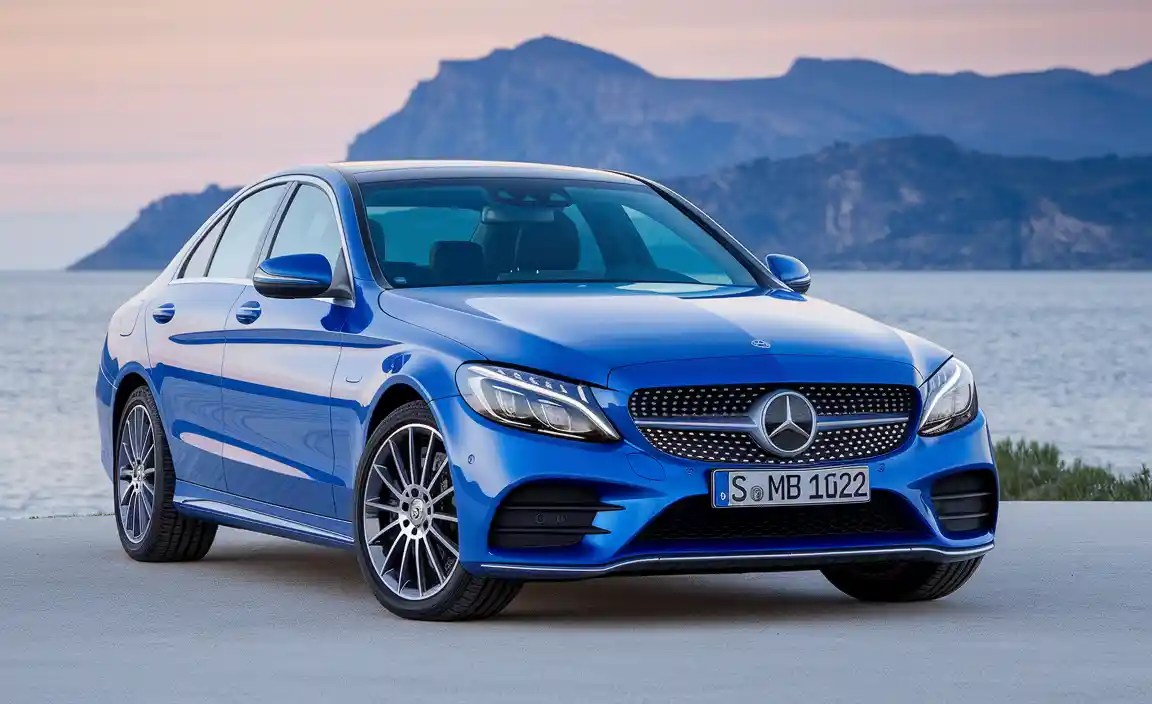
Mercedes-Benz, always at the forefront of automotive technology, utilizes advanced battery types in its C-Class lineup to meet the evolving demands of modern vehicles. Understanding these types is key to maintaining optimal performance and longevity.
Enhanced Flooded Battery (EFB)
EFB technology is an evolution of the traditional flooded lead-acid battery. It’s an excellent choice for vehicles with basic stop-start functionality and higher electrical demands than conventional cars.
Key characteristics of EFB batteries:
- Improved Cycle Life: EFB batteries can handle more charge and discharge cycles compared to standard flooded batteries. This is essential for start-stop systems that frequently turn the engine on and off.
- Better Vibration Resistance: They are often encased in a more robust housing, offering improved resistance to vibrations, which is beneficial in high-performance vehicles.
- Enhanced Performance: EFB batteries provide a more stable voltage output, supporting the car’s electrical systems even under demanding conditions.
- Cost-Effective: While more advanced than standard batteries, they are generally less expensive than AGM batteries, making them a good balance of performance and value for certain C-Class trims.
Absorbent Glass Mat (AGM) Battery
AGM batteries represent a leap forward in battery technology. They are the preferred choice for vehicles with advanced start-stop systems, regenerative braking, and a high number of electrical consumers like sophisticated infotainment and navigation systems. Many modern C-Class models are equipped with AGM batteries as standard.
Key characteristics of AGM batteries:
- Superior Cycle Life: AGM batteries offer significantly more charge and discharge cycles than EFB batteries, making them ideal for the rigorous demands of advanced start-stop technology and regenerative braking.
- Higher Energy Density: They can store more energy, providing better performance for powering numerous electrical devices simultaneously.
- Deep Discharge Capability: AGM batteries are designed to tolerate deeper discharges without damage, which is vital as vehicle electronics often draw power even when the engine is off.
- Fast Charging: They can accept a charge much faster than conventional batteries, which is beneficial for regenerative braking systems that capture energy during deceleration.
- Leak-Proof and Maintenance-Free: The electrolyte is absorbed into fiberglass mats, making the battery spill-proof and reducing the need for maintenance.
- Excellent Performance in Extreme Temperatures: AGM batteries generally perform better in both very cold and very hot conditions.
How to Identify Your C-Class Battery Type
Identifying the correct battery type for your C-Class is paramount. Always refer to your owner’s manual or look for labels on the battery itself. It will typically indicate “EFB” or “AGM” if that’s the type installed. Mercedes-Benz often uses specific part numbers for these batteries, so referencing your VIN (Vehicle Identification Number) with a dealership or reputable parts supplier is the most accurate way to confirm the exact specification required for your model year and trim.
Performance Metrics Explained: Capacity and Cranking Power
When discussing C Class battery specs, two performance metrics stand out for their direct impact on your driving experience: capacity and cranking power. These aren’t just technical terms; they translate into how reliably your car starts and how well its electrical systems perform.
Ampere-Hour (Ah) Rating: The Stamina of Your Battery
The Ampere-hour (Ah) rating is a measure of a battery’s energy storage capacity. It tells you how much current the battery can deliver over a specific period. For example, a 70 Ah battery could theoretically deliver 1 ampere for 70 hours, or 7 amperes for 10 hours.
Why Ah matters for your C-Class:
- Powering Electronics: Modern C-Class vehicles are equipped with sophisticated electronics – from infotainment and navigation systems to climate control and advanced driver-assistance systems (ADAS). A healthy Ah rating ensures these systems receive stable power, even when the engine is idling or off.
- Supporting Start-Stop Systems: For C-Class models with start-stop functionality, the battery needs sufficient capacity to power the vehicle’s accessories when the engine pauses. A higher Ah rating means more reserves for these situations, preventing premature power drain.
- Preventing Drain: If you leave headlights on or the car in accessory mode for an extended period, a battery with a higher Ah rating will provide longer run time before depletion.
Cold Cranking Amps (CCA): The Heartbeat in the Cold
Cold Cranking Amps (CCA) is a crucial specification, especially if you live in a region with freezing temperatures during winter. It quantifies a battery’s ability to start an engine under extreme cold conditions.
What CCA means for your C-Class:
- Reliable Starting: Engine oil thickens considerably in cold weather, making it harder for the starter motor to turn the engine. CCA measures the battery’s power output at 0°F (-18°C) to overcome this increased resistance and reliably start your engine. A higher CCA ensures faster, more confident starts in the cold.
- Starter Motor Protection: Insufficient CCA can strain the starter motor, potentially shortening its lifespan. A correctly rated battery provides the necessary grunt to get the engine turning quickly, reducing wear on the starter.
- Meeting Manufacturer Requirements: Mercedes-Benz specifies a minimum CCA rating for each C-Class model to ensure reliable performance across various climates. Using a battery with a lower CCA than recommended can lead to starting issues.
What are Typical C Class Battery Specs?
While exact specifications can vary slightly based on the model year, engine type, and specific trim level of your C-Class, here’s a general overview of typical C Class battery specs you might encounter:
| Specification | Typical Range for Mercedes-Benz C-Class | Importance |
|---|---|---|
| Voltage | 12 Volts | Standard for all modern vehicles; powers all electrical systems. |
| Capacity (Ah) | 60 Ah – 85 Ah | Determines how long the battery can power accessories and maintain stable electronics. Higher is generally better, depending on vehicle’s electrical load. |
| Cold Cranking Amps (CCA) | 450 CCA – 750 CCA | Crucial for reliable engine starting in cold weather. Higher CCA is essential for frigid climates. |
| Battery Type | AGM (Absorbent Glass Mat) or EFB (Enhanced Flooded Battery) | Required for vehicles with start-stop systems and high electrical demands. AGM is generally preferred for advanced systems. |
| Reserve Capacity (RC) | 100 – 150 minutes | Indicates how long essential systems can run if the alternator fails. |
It is always best to consult your Mercedes-Benz C-Class owner’s manual or a qualified technician for the precise battery specifications recommended for your specific vehicle. Using a battery that meets or exceeds these specs will ensure optimal performance and electrical system integrity.
Selecting the Right Battery for Your C-Class
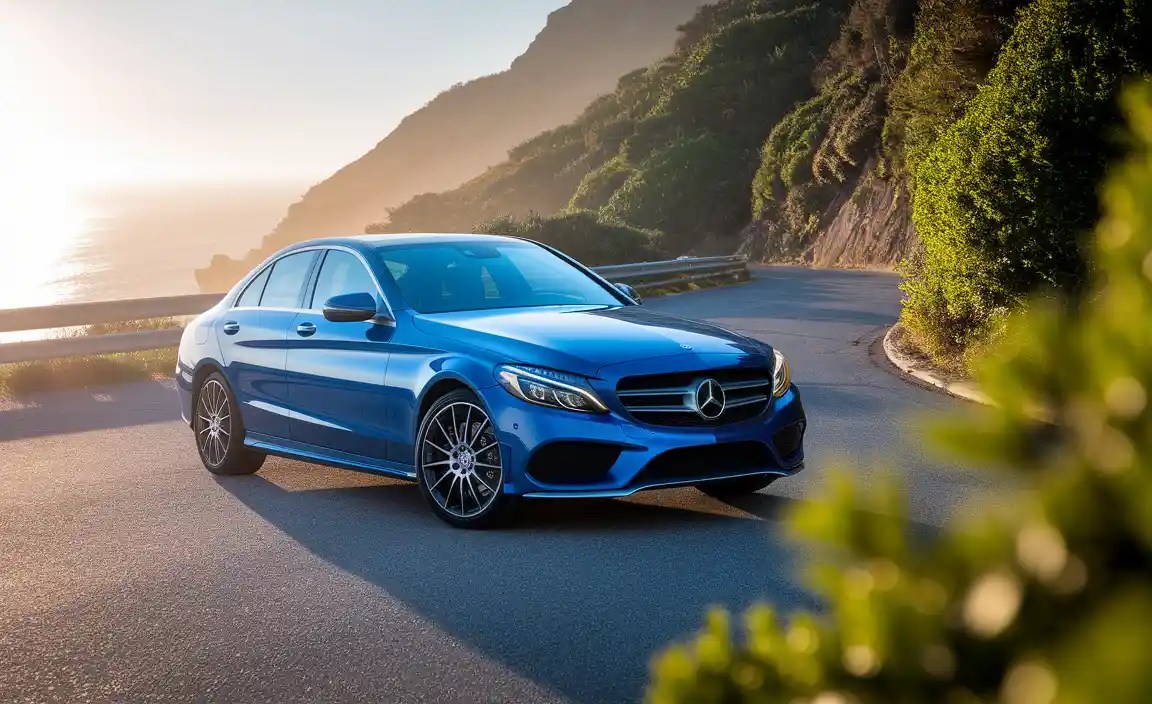
Choosing the correct battery is more than just finding one that fits. For a Mercedes-Benz C-Class, it means ensuring compatibility with its advanced systems and meeting the stringent performance requirements set by Mercedes-Benz.
Consult Your Owner’s Manual
This is your most valuable resource. Your owner’s manual will list the exact specifications required for your C-Class, including voltage, capacity (Ah), Cold Cranking Amps (CCA), and crucially, the recommended battery type (AGM, EFB, or other). Mercedes-Benz often uses specific part numbers, so noting these down is a good idea. Always aim to match or exceed these specifications.
Understand Your C-Class Model’s Needs
Cars with Start-Stop Systems: If your C-Class features a start-stop system, it almost certainly requires an AGM (Absorbent Glass Mat) or EFB (Enhanced Flooded Battery). These systems place immense stress on the battery due to frequent deep discharges. Using a standard flooded battery will drastically reduce its lifespan and could lead to system errors. AGM is typically the preferred technology for most modern Mercedes-Benz vehicles with advanced start-stop.
Cars with High Electrical Loads: Models equipped with premium sound systems, extensive navigation, multiple displays, and numerous comfort features will also benefit from the higher performance and stability offered by an AGM battery.
Climate Considerations: Living in a region with extreme temperatures (very hot or very cold) necessitates a battery with robust performance across that spectrum. AGM batteries generally excel in both hot and cold conditions. For cold climates, ensure the CCA rating meets or exceeds the manufacturer’s recommendation.
Where to Buy a Quality Replacement Battery
Authorized Mercedes-Benz Dealership: This is the safest option for ensuring you get a genuine, perfectly spec’d battery. While often the most expensive, it guarantees compatibility and quality.
Reputable Auto Parts Stores: Many well-known auto parts retailers carry high-quality aftermarket batteries that can meet or exceed OEM specifications. Look for brands with good warranties and positive reviews. Ensure they can provide battery testers and verify fitment for your C-Class using their databases.
Specialty Battery Retailers: Businesses that specialize in batteries often have a wide selection and knowledgeable staff who can help you find the precise C Class battery specs you need.
Key Considerations Before Buying:
- Warranty: Look for a battery with a solid warranty. Most reputable brands offer warranties ranging from 2 to 5 years.
- Date of Manufacture: Batteries have a shelf life. Check the manufacturing date code on the battery housing. It’s best to purchase a battery manufactured within the last 6-12 months.
- Terminal Type and Size: Ensure the terminals (positive and negative posts) are in the correct position for your C-Class and that the battery dimensions will fit correctly in the battery tray.
- Professional Installation: While some DIYers can tackle battery replacement, it’s a task best left to professionals for a few reasons. Modern Mercedes vehicles have complex battery management systems that need to be properly informed of a battery change via diagnostic tools to prevent errors and ensure optimal charging. Additionally, handling batteries involves safety precautions.
Battery Maintenance Tips for Ultimate Performance
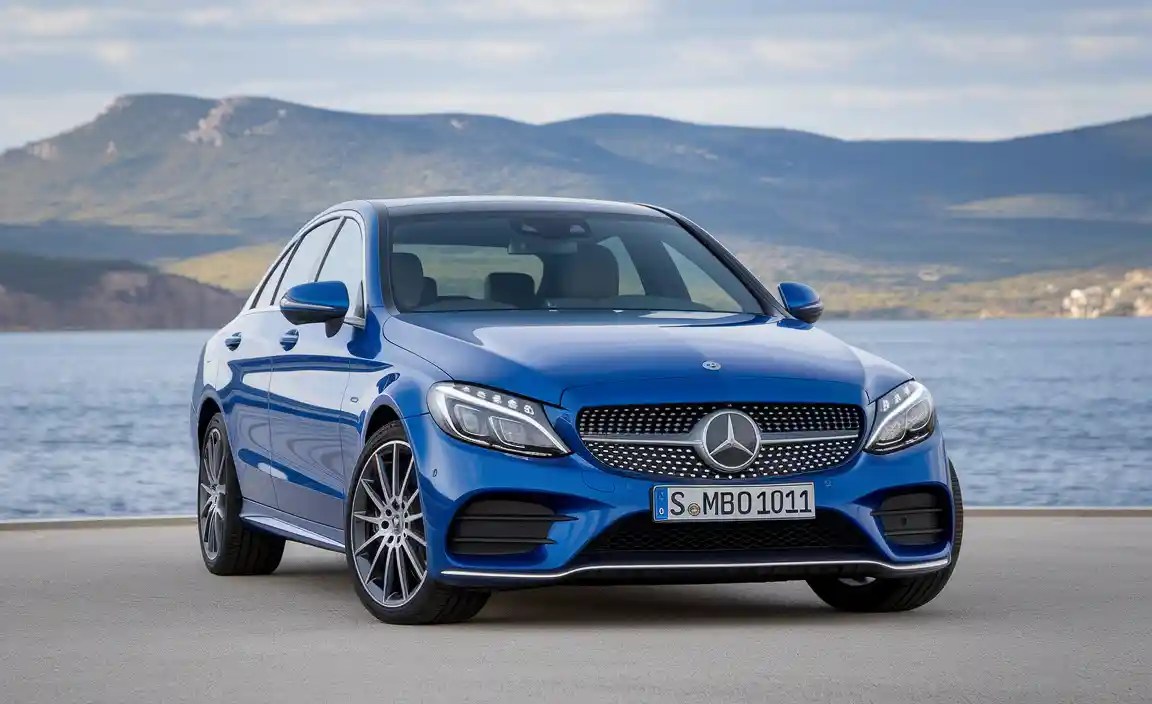
Even with the best C Class battery specs, neglecting basic maintenance can shorten its lifespan and impact your C-Class’s performance. Here are some tips to keep your battery in top condition:
Keep the Battery Terminals Clean
Corrosion on battery terminals (a bluish-white powdery substance) can impede electrical flow, leading to starting problems and reduced performance.
Steps to clean terminals:
- Safety First: Ensure the engine is off and the key is out of the ignition. You may want to wear safety glasses and gloves.
- Disconnect: Loosen and remove the negative (-) terminal clamp first, followed by the positive (+) terminal clamp.
- Clean: Use a wire brush or a specialized battery terminal cleaner. A paste made from baking soda and water can also be effective.
- Rinse and Dry: Rinse the terminals and cable clamps with clean water and dry them thoroughly.
- Apply Protectant: Apply a thin layer of dielectric grease or petroleum jelly to the cleaned terminals to prevent future corrosion.
- Reconnect: Reattach the positive (+) terminal clamp first, then the negative (-) terminal clamp. Tighten securely.
Check Battery Voltage Regularly
A fully charged 12-volt lead-acid battery should read approximately 12.6 volts or higher when the engine is off and has been resting for a few hours. Use a multimeter for this check. If you consistently see lower readings, it might indicate a charging issue (alternator problem) or a failing battery. You can find detailed guides on using a multimeter from resources like NHTSA.
Ensure Proper Seatting and Securing
A loose battery can lead to vibrations, damaging the internal components and potentially causing short circuits if it shifts.
- Ensure the battery is firmly secured in its tray by its hold-down clamp or bracket.
- Check that the battery cables are tightly connected to the terminals.
Understand Your Vehicle’s Battery Management System (BMS)
Modern Mercedes-Benz vehicles, including the C-Class, feature sophisticated Battery Management Systems (BMS). The BMS monitors battery health, charging status, and temperature, and it needs to be “told” when a battery is replaced.
Why this is important:
- Optimized Charging: The BMS adjusts the alternator’s output to suit the battery’s condition, ensuring efficient charging and prolonging battery life.
- Accurate Diagnostics: If the BMS isn’t updated after a battery change, it might continue to operate based on the old battery’s parameters, leading to incorrect charging strategies, potential system errors, or dashboard warnings.
- Professional Reset: Replacing a battery in a modern Mercedes typically requires a diagnostic tool



